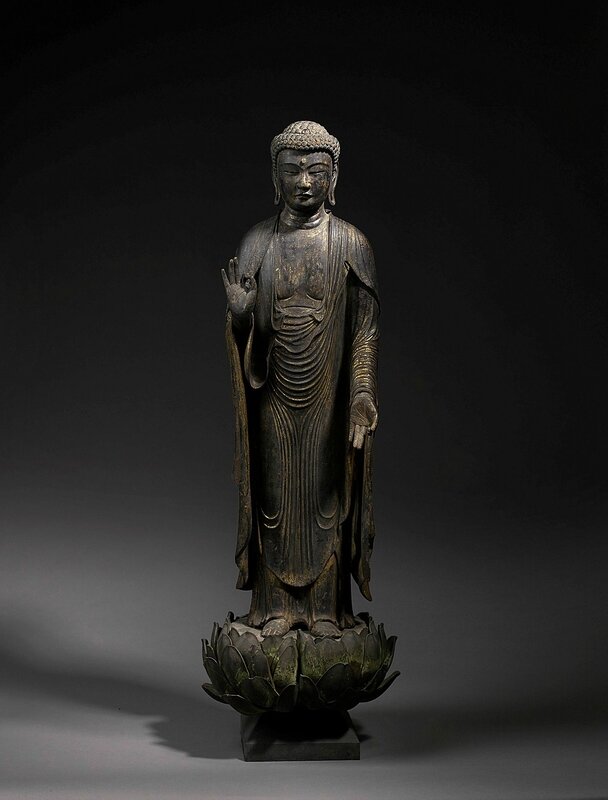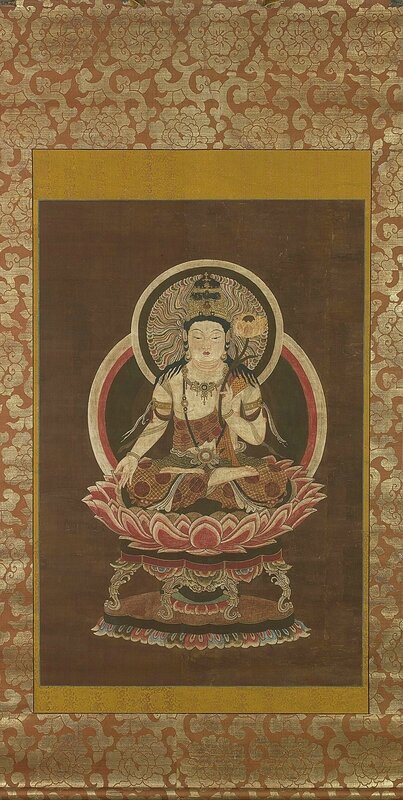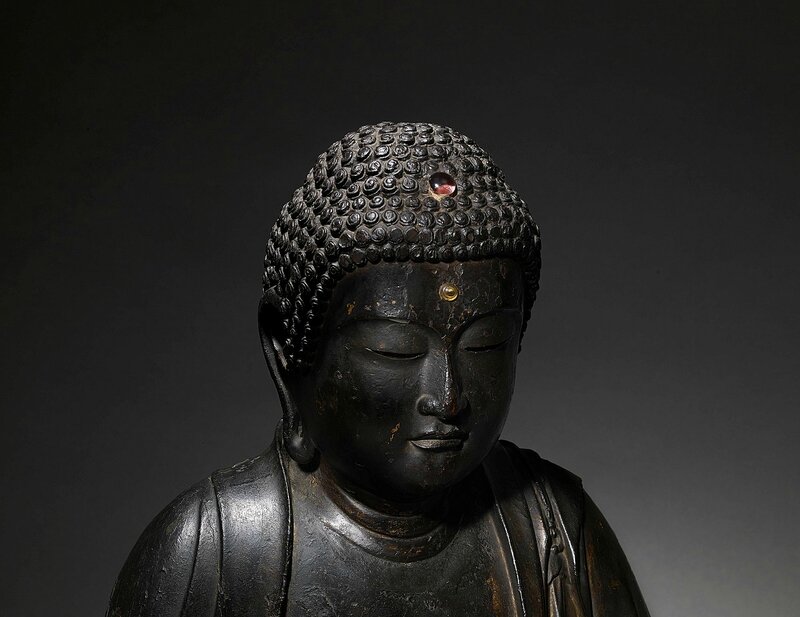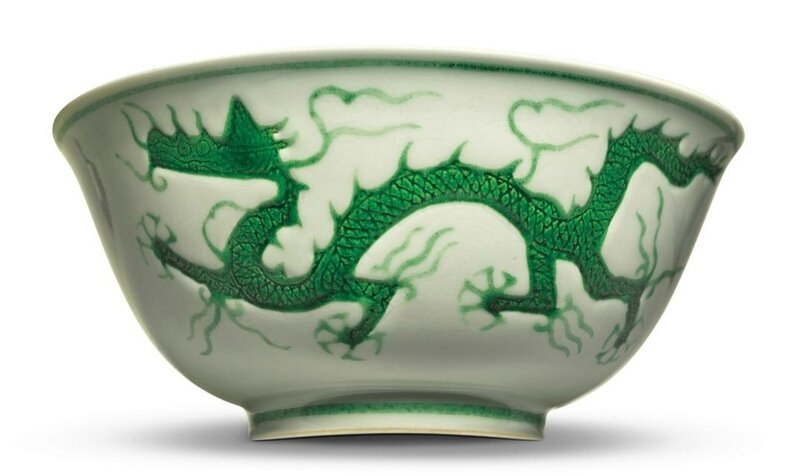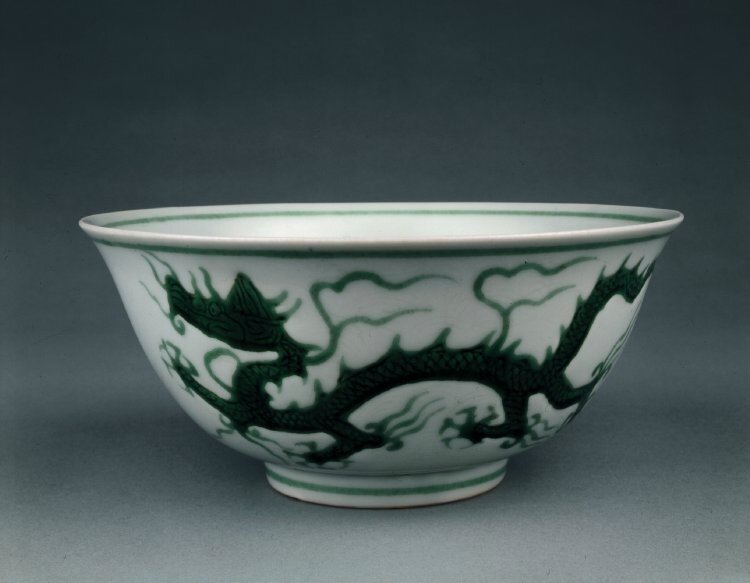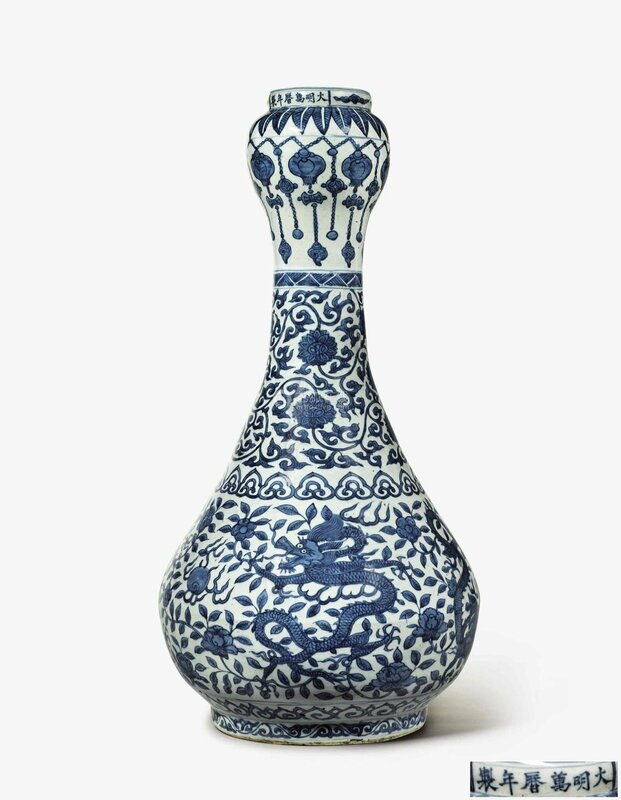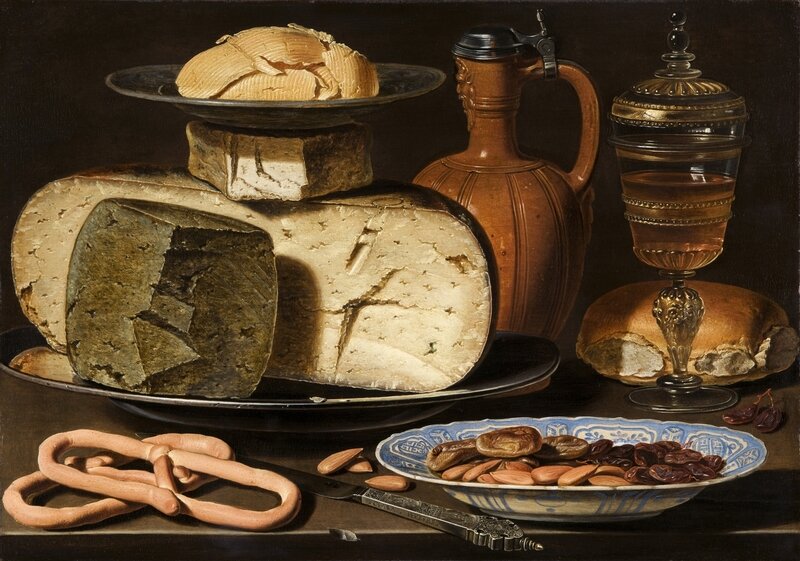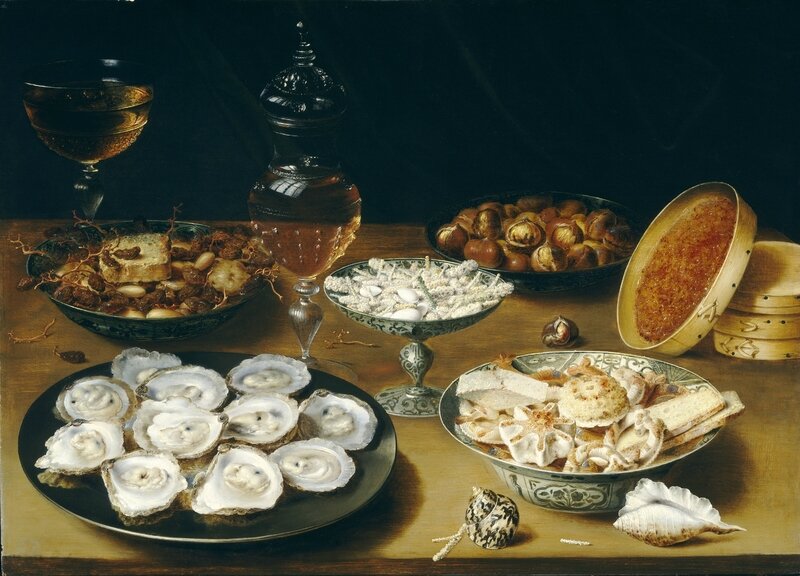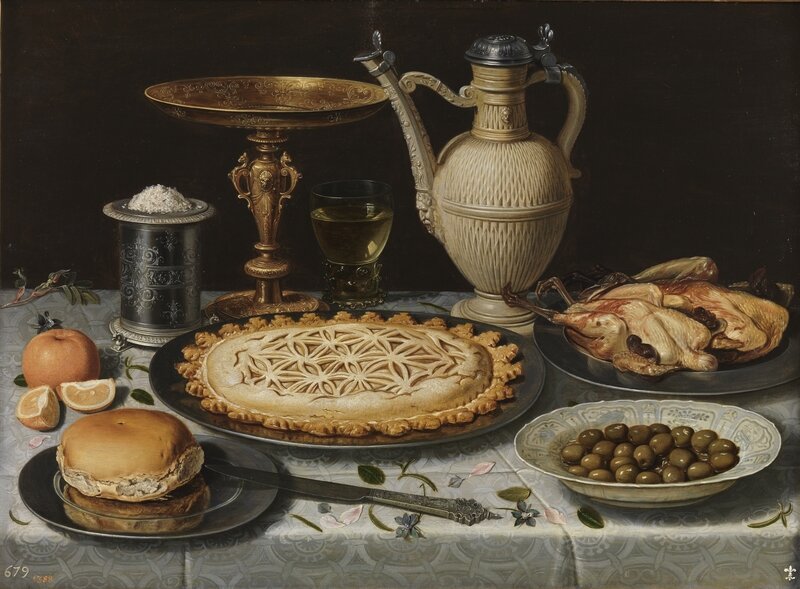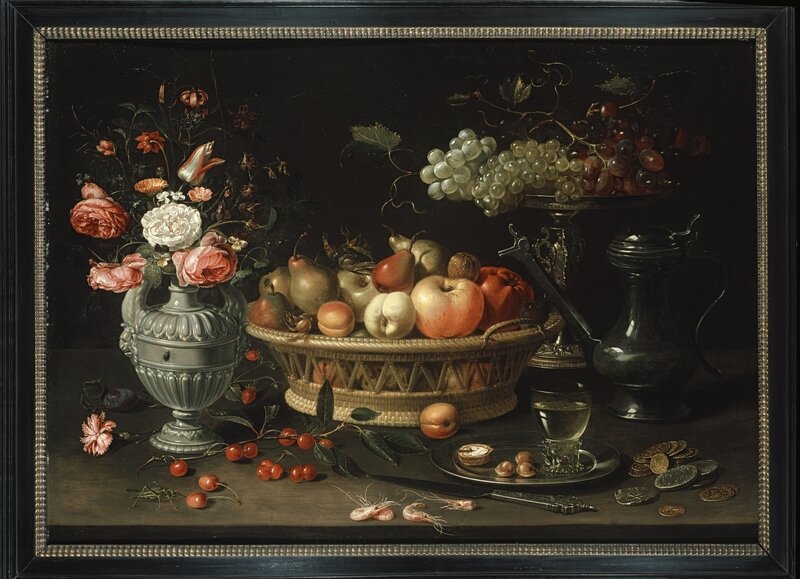![1]()
Francesco Guardi (1712-1793), Piazza San Marco with the Basilica and the Campanile. Sold for: €6,738,500 / £5,829,476 / $7,158,309.© Christie’s Images Limited 2017.
PARIS.- On 7 March 2017, Christie’s Boniface de Castellane and Anna Gould ‘A way of Life’ auction realised a total of €14,266,563 / £12,342,004 / $15,155,370. These exceptional results reflect the relevant choices Boni had made when furbishing his legendary Palais Rose with the most exquisite works of art.
Lionel Gosset, Head of Collection sales, Christie’s France: “Continuing Christie’s long history of offering prestigious collections at auction, we are honoured to have paid such a beautiful tribute to this important collection. Its celebrated provenance and the pristine quality of its works have attracted bidders from 19 countries across five continents, establishing once again Christie’s France’s leadership in selling collections with success”.
Connoisseurs, collectors and institutions, such as the Sèvres museum (lot 145) and the Lyndhurst museum –Anna Gould’s childhood home in the state of New York (lots 2, 6, 10 and 16)–, have acquired 96% of the sale, demonstrating continued interest in high quality 18th century pieces. The Palais Rose’s famous Boulle furniture achieved strong prices, as illustrated by the Louis XVI pair of meubles-à-hauteur-d’appui by Etienne Levasseur and Adam Weisweiler which sold for €818,500 (lot 132) and the Louis XIV console attributed to André-Charles Boulle sold for €506,500 (lot 140). Important decorative art from the period also performed very well, as shown by the Sèvres porcelain “vases” which realised €206,500 against a presale estimate of €80,000-120,000 (lot 52) and a George III clock attributed to James Cox achieved €290,500 (lot 89).
![2]()
Lot 145. Partie de service de table en porcelaine de Sèvres de la fin du XVIIIe -début du XIXe siècle, circa 1800, diverses marques en bleu aux deux L entrelaces,RF, et Sèvres, diverses marques de peintres. Estimate EUR 20,000 - EUR 30,000 (USD 21,215 - USD 31,822). Sold EUR 43,750 (USD 46,408) to Sèvres museum. © Christie’s Images Limited 2017.
![3]()
A décor polychrome et or au centre d'un bouquet de roses dans un médaillon végétal, l'aile à décor de rosaces et de bouquets dans des entrelacs entre deux galons bleus à décor de rang de perles, comprenant: une paire de "seau à glace à trépied" et leur couvercle, deux "seaux crénelés", deux sucriers, leur couvercle et leur plateau, deux confituriers double à plateau adhérent "Lefébure", leur doublure et leur couvercle, six tasses à glace, un plateau Bouret, deux compotiers coquille, deux compotiers carrés, deux compotiers, trente-neuf assiettes "unies" et douze assiettes à dessert; on ajoute deux intérieurs assortis pour les glacières; éclats, égrenures et usures. Longueur des seaux crénelés: 28 cm. (11 in.)
Provenance: Peut-être de l'achat du 29 nivose An VIII (19 janvier 1800) fait par la maison Lemercier et Compagnie: "zones bleu Médaillons, Arabesques".
Ancienne collection Boni de Castellane et Anna Gould, Palais Rose, Paris.
Literature; Inventaire: Mes Laurin et Ader, Etat descriptif et estimatif de meubles, sièges, objets d'art (..) garnissant le Palais Rose, Paris, vers 1961: "n.395. Service en porcelaine de Sèvres du début du XIX°à décor de bouquets, de roses, bandes bleues et roses mauves. 1794-1804 (...) Prisés 18.000 francs."
Note: Pour un descriptif complet de cette livraison, voir par David Peters, Sèvres plates and service of the 18th century, Little Berkhamsted, 2005, pp. 1235-1236.
![3]()
![6]()
![5]()
![4]()
![7]()
Lot 132. Paire de meubles à hauteur d'appui d'époque Louis XVI, vers 1780, estampilles d'Etienne Levasseur et d'Adam Weisweiler, exécutée par E. Levasseur et rehaussée par A. Weisweiler. Estimate EUR 600,000 - EUR 1,000,000 (USD 636,458 - USD 1,060,763). Price realised EUR 818,500 (USD 868,235) © Christie’s Images Limited 2017.
En marqueterie Boulle de première partie à fond d'écaille de tortue caret, incrustations de cuivre et d'étain gravés, placage d'ébène, ornementation de bronze ciselé et doré, les dessus de marbre Portor à légers ressauts, les montants en pilastre à chapiteau corinthien et centré de masques de satyre encadrant un vantail centré d'une marqueterie probablement d'époque Louis XIV à décor d'un vase fleuri dans un médaillon retenu par un nœud de ruban et entouré de rinceaux, reposant sur des pieds en toupie à cannelures torses, chacun estampillé E.LEVASSEUR sur le montant antérieur gauche, une fois JME pour l'un et deux fois JME pour l'autre et A.WEISWEILER à deux reprises au-dessus de la traverse postérieure du sur-cadre. Hauteur: 108 cm. (42 ½ in.) ; Largeur: 72 cm. (28 ½ in.) ; Profondeur: 41 cm. (16 ¼ in.)
Etienne Levasseur, reçu maître en 1766
Adam Weisweiler, reçu maître en 1778
Provenance: Vente des collections de Louis-Antoine-Auguste duc de Chabot (1733-1807), Lebrun, Paris, 10 décembre 1787, lot 317 (supplément au catalogue).
Vente des collections de Quintin Craufurd (1743-1819), Paris, 20 novembre 1820, lot 468.
Ancienne collection Boni de Castellane et Anna Gould, Palais Rose, Paris.
Inventaire: Mes Laurin et Ader, Etat descriptif et estimatif de meubles, sièges, objets d’art (…) garnissant le Palais Rose, Paris, vers 1961:
« n. 702 Paire de petits meubles d'appui, ouvrant chacun à une porte, en marqueterie d'écaille, de cuivre et d'étain, dans le style de Boulle. Pieds toupies torsadés. Garniture de bronzes tels que : médaillons, encadrements, masques, etc… Estampille de Weisweiler. Epoque Louis XVI. Dessus de marbre portor prisée 40,000 francs »
Literature
BIBLIOGRAPHIE: G. Mézin, « Chez Quentin Craufurd en 1819 : Le Goût d'un gentleman espion », in Bulletin de la Société de l'Histoire de l'ArtFrançais, année 2009, Paris, 2010, p. 341 (non illustrés).
BIBLIOGRAPHIE COMPARATIVE: P. Hughes, The Wallace Collection. Catalogue of Furniture, vol. II, Londres, 1996, pp. 594-599.
Note: Avec ses lignes architecturées épurées et sa précieuse marqueterie dite Boulle richement ornée de bronzes dorés, cette rare paire de cabinets est un magnifique exemple du renouveau du « style Boulle » dans les années 1770-1780, caractéristique de l’œuvre de son créateur l’ébéniste Etienne Levasseur.
LEVASSEUR : GENIE DU RENOUVEAU « BOULLE »
Comme un certain nombre de ses contemporains, Philippe-Claude Montigny, Joseph Baumhauer et Adam Weisweiler, Etienne Levasseur (1721-1798, maître en 1767) collabora avec des marchands-merciers tel que Philippe-François Julliot (1727-1794) qui se spécialisèrent dans la production et la vente de meubles dits Boulle remis au goût du jour vers 1770. Alors que certains ébénistes copièrent à l’identique les modèles du début du siècle d’André-Charles Boulle, Levasseur fut certainement le plus créatif, bien que réutilisant parfois des éléments de marqueterie de meubles réalisés par André-Charles Boulle. La présente paire de cabinets est une parfaite illustration du génie de Levasseur et de sa capacitéà réinterpréter les modèles de son illustre prédécesseur André-Charles Boulle.
Avec son unique vantail orné d’un médaillon, ce modèle de meuble reprend en effet le module central des bibliothèques tripartites de Boulle mais se libère des panneaux qui l’encadrent, créant ainsi un meuble d’un nouveau type. Levasseur s’en fit une spécialité et plusieurs meubles de cette forme portent son estampille ou lui sont attribués. Citons la paire de cabinets ornés de mascarons estampillée Levasseur vendu chez Couturier-Nicolaÿ, Paris, 14 mars 1972, lot 122 (illustrée dans A. Pradère, French Furniture Makers, Paris, 1989, p. 309, ill. 349) ou encore la paire de cabinets vendue chez Christie’s, Londres, 8 décembre 2011, lot 260. D’autres meubles avec même encadrement et des têtes de satyres mais comprenant trois tiroirs en leur milieu sont également répertoriés. Citons notamment la suite de quatre cabinets estampillés par Levasseur vendus chez Sotheby’s, New York, lot 212 (illustrés dans A. Pradère, French Furniture Makers, Paris, 1989, p. 309, ill. 350). Un troisième groupe de cabinets est constitué quant à lui d’un vantail central flanqué de deux panneaux latéraux plus étroits, comme la paire de cabinets de la collection Champalimaud vendue chez Christie’s, Londres, 6 juillet 2005, lot 125, qui provient possiblement de la collection du marquis de Laborde pour son château de Méréville.
Le motif de bouquet de fleurs en marqueterie Boulle visible sur la présente paire s’inscrit lui aussi dans la production de meubles d’André-Charles Boulle. On retrouve notamment ce principe sur les panneaux rectangulaires d’une paire de cabinets provenant des collections de Charles-Joseph Lenoir du Breuil aujourd’hui au musée du Louvre (inv. OA5453 et OA5454). Il est intéressant de noter que ces meubles d’époque Louis XIV portent l’estampille de Levasseur qui les restaura probablement durant la seconde moitié du XVIIIème siècle. Le motif de médaillon suspendu comme un tableau sur fond de placage ou de marqueterie fut quant à lui particulièrement en vogue dans les années 1770, comme en témoignent les nombreuses commodes de Foullet ou encore les bibliothèques de marqueterie Boulle ornées de médaillons de bronze produites pour le marchand Julliot dans les mêmes années.
La postérité de ces deux cabinets sera une série de cabinets bas en marqueterie Boulle à médaillons de fleurs, médaillons de bronze ou bas-reliefs octogonaux, réalisés par Julliot et commercialisés par le marchand Lerouge sous l’Empire qui terminèrent toutes, à la suite de la vente Lerouge de 1818, dans de grandes collections anglaises à l’instar de celle du duc de Wellington à Stratfield Saye et de celle du duc de Buccleuch à Boughton House (A. Pradère, « Lerouge, Le Brun, Bonnemaison : le rôle des marchands de tableaux dans le commerce du mobilier Boulle de la Révolution à la Restauration », in Revue de l’Art, n. 184, 2014-2, pp. 47-62).
LES PROVENANCES DES CABINETS CASTELLANE
Ces meubles sont décrits pour la première fois dans le supplément du catalogue de vente du duc de Chabot, le 10 décembre 1787 :
« 316. Deux bas d’armoires, première partie sur fond écaille ouvrant à un battant, enrichi d’un médaillon ovale à vases fond cuivre & étain, avec cadre à nœud de ruban & feuille d’eau ; les champs à mascarons de faunes & les côtés de même : le tout terminé par un pied à avant-corps très orné, avec tablette en griotte d’Italie. Hauteur 36 pouces, largeur 26 pouces 6 lignes, profondeur 14 pouces [H. 97 x L. 71,5 x P. 37,8 cm.] … 2050 livres Lebrun ».
Alors que la première partie du catalogue de cette vente regroupait les collections de tableaux et d’objets d’art du duc de Chabot, le supplément du catalogue proposait quantité de lots de tableaux et de meubles provenant d’autres amateurs ou marchands dont Le Brun lui-même. En l’occurrence, cette paire de meubles fut achetée par Le Brun 2.050 livres, enchère importante qui laisse penser que Le Brun était commissionné par un de ses clients privés. On ignore l’identité du propriétaire suivant mais ces meubles réapparaissant au début du Premier Empire dans la demeure, rue d’Anjou, d’un des grands collectionneurs étrangers alors installés à Paris, Quentin Craufurd.
Cette paire de meubles est en effet décrite dans la première vente aux enchères des collections de Quentin Craufurd qui eut lieu un an après son décès, le 20 novembre 1820 « et jours suivants » précédée par trois jours d’exposition dans sa résidence parisienne, l’hôtel de Créquy rue d’Anjou.
« 468. Deux bas d’armoire ouvrant chacun à un vantail, fond écaille, à dessin incrusté en cuivre et étain, encadrement, moulure et pieds à vis en fonte dorée d’or moulu et à: dessus de marbre portor ; le médaillon du milieu offrant un bouquet de fleurs, pareille incrustation en cuivre et étain. Ils portent 41 pouces de hauteur sur 27 de large [H. 111 x L. 73 cm.] ».
Ces cabinets figuraient dans la section du catalogue consacrée aux « Riches meubles, par Boulle et autres ébénistes », et étaient précédés par trois autres paires de bas d’armoires à un vantail ornés de figures des Saisons, décrits sous les numéros 463, 464, 465, et également décrits de façon sommaire dans l’inventaire après décès : « 596. Huit pièces qui sont armoires à hauteur d’appui ouvrant à un vantau partie ébène et écaille avec incrustations de cuivre et d’étain et figures et groupes d’appliques en bronze sur pieds tortue [sic], ouvrage de Boule avec dessus en marbre dit Ste. Anne et portor, prisés ensemble la somme de deux mille quatre cents francs cy ». Ces quatre paires de cabinets bas se trouvaient, ainsi que tous les autres meubles Boulle à hauteur d’appui, dans la bibliothèque de Craufurd, vaste galerie àéclairage zénithal, bâtie dans une aile latérale en retour sur le jardin de l’hôtel de Créquy.
QUENTIN CRAUFURD
Le destin singulier et les collections de Quentin Craufurd (1743-1819) ont étéétudiés par Gonzague Mézin (cf. « Chez Quentin Craufurd en 1819 : Le Goût d'un gentleman espion », in Bulletin de la Société de l'Histoire de l'Art Français, année 2009, Paris, 2010, pp. 335-361).
Né en Ecosse, Craufurd fait fortune à Manille dans l'East India Company avant de revenir en Europe vers 1780, s'installant à Paris avec Eléonore Franchi, dite « la belle Sullivan ». Logé vers 1786-1792 dans l'hôtel Rouillé d'Orfeuil rue de Clichy, Craufurd devint familier d’une société de riches étrangers parisiens, approchant même Axel de Fersen et le cercle de la reine Marie-Antoinette. Lorsque la Révolution éclata, ils apportèrent leur soutien fidèle à la famille royale en participant activement à la « fuite de Varennes ». Il dut par la suite s'exiler et ses premières collections furent confisquées. Une partie fut vendue et l’autre fut en partie réservée au profit de la Nation.
De retour en France en 1802 grâce à la Paix d'Amiens, Craufurd réussit grâce à la protection de Talleyrand à y demeurer après la rupture de la paix avec l'Angleterre un an plus tard. Sous l'Empire, le couple Craufurd s'installe successivement dans deux belles demeures parisiennes. Ils occupent tout d'abord l'hôtel de Monaco (actuel hôtel Matignon), acheté en 1804 puis échangé avec le prince de Talleyrand quatre ans plus tard contre l'hôtel de Créquy. C'est dans ce dernier hôtel situé au 21 de la rue d'Anjou que Craufurd habita jusqu'à son décès en 1819 ; son épouse y résidera jusqu'en 1833.
La grande galerie de cet hôtel qui abrita la présente paire de cabinets servait lieu d’exposition pour une collection de bustes en marbre représentant des personnages historiques (Gustave III, Marie-Antoinette, Napoléon, Madame de Maintenon) mais aussi des philosophes et des écrivains (Voltaire et Rousseau, Homère et Corneille). Posés sur des gaines d’acajou, quatre bustes en bronze représentaient d’autres personnages historiques parmi lesquels Henri II, Richelieu, Montesquieu et Louis XII. Tout autour de la galerie et accrochés en hauteur, on pouvait apprécier une collection de soixante-huit portraits historiques respectant un véritable programme iconographique, véritable collection des rois de France affichant les convictions politiques de Craufurd. Cette bibliothèque faisait l’admiration de certains visiteurs, tel Thomas Dibdin qui écrivait avec enthousiasme : « Vous entrez dans une longue et vaste pièce, qui sert à la fois de bibliothèque et de galerie. On se trouve alors comme un instant étourdi ; c'est-à-dire que l’on ne sait ce qu’on doit admirer le plus : ou de ses proportions et de la structure de la salle, ou des livres, des bustes et des tableaux. » (T. Dibdin traduit par T. Licquet et G.-A. Crapelet, Voyage bibliographique, archéologique et pittoresque en France et en Allemagne, 1821-1825).
![4]()
Cabinet, Adam Weisweiler (1744 - 1820), France, c. 1780. Ancienne collections Q. Craufurd, puis du 4e marquis de Hertford, Wallace Collection, Londres. © The Wallace Collection, London
![5]()
Collection des ducs de Buccleuch, Boughton House, Northhamptonshire. © Avec l’aimable autorisation du duc de Buccleuch et de Queensberry KBE
Les trois autres paires de petits meubles de marqueterie Boulle de la galerie étaient elles aussi des meubles de l’époque néoclassique. Les deux premières paires, sous les numéros 463 et 464, et aux dessus de marbre gris Saint-Anne, sont attribuables à Weisweiler (le n°463 a été présenté lors d’une vente au palais d’Orsay, Paris, 8 juin 1977, lot 83 ; puis ancienne collection Wormser, Christie’s, New York, 14 novembre 1985, lot 194 A). La troisième paire de cabinets, sous le numéro 465, était munie de dessus de marbre Portor, et terminera dans la collection du 4e marquis de Hertford. Elle se trouve aujourd’hui à la Wallace Collection (inv. F. 393-394). Il s’agit là encore de meubles néoclassiques, estampillés en l’occurrence par Adam Weisweiler. Il est intéressant de noter que la paire de la Wallace Collection présente la même hauteur (111 cm.) et les mêmes dessus de marbre Portor que ceux ici présentés. Il est tentant d’imaginer que la surélévation de ceux-ci et la substitution d’un marbre Portor à un marbre griotte initial correspondent à une modification par Adam Weisweiler lors d’un changement de lieu, d’autant plus que l’ébéniste était toujours actif et ce jusqu’au décès de sa femme en 1809. Compte tenu de la réinstallation parisienne de Craufurd en 1803-1804, il est probable que ces légères transformations furent exécutées à ce moment par l’ébéniste ou bien à une date légèrement antérieure et par un collectionneur précédent qui aurait réuni les deux paires de meubles entre 1787 et 1803.
![6]()
![7]()
![8]()
![9]()
Lot 140. Console d'époque Louis XIV, attribuée à André-Charles Boulle, début du XVIIIe siècle. Estimate EUR 300,000 - EUR 500,000 (USD 318,229 - USD 530,381). Price realised EUR 506,500 (USD 537,277). © Christie’s Images Limited 2017.
En marqueterie Boulle de première partie d’écaille de tortue caret et cuivre gravé et placage d’ébène, ornementation de bronze ciselé et doré, le plateau à décor d’un char tiré par des bœufs soutenant des putti jouant à la balançoire et encadré de rinceaux, la ceinture centrée d’une palmette ajourée et ouvrant par trois tiroirs, reposant sur six pieds dont quatre galbés surmontés de têtes féminines couronnées de feuilles de laurier et de têtes de satyre terminées par des volutes feuillagées et deux pieds fuselés à section octogonale, réunis par une entretoise centrée d’un vase couvert remplacé ; manques et accidents principalement à l'entretoise, quelques éléments associés. Hauteur: 78,5 cm. (31 in.) ; Largeur: 133 cm. (52 ¼ in.) ; Profondeur: 54 cm. (21 ¼ in.)
Provenance: Probablement vente des collections de François-Michel Harenc de Presle (1710-1802), 16 avril 1792, lot 410.
Probablement vente des collections de François-Antoine Robit (v.1762-1815),? 15 Frimaire an 9 (6 décembre 1800), lot 299.
Ancienne collection Boni de Castellane et Anna Gould, Palais Rose, Paris.
Inventaire: Mes Laurin et Ader, Etat descriptif et estimatif de meubles, sièges, objets d’art (…) garnissant le Palais Rose, Paris, vers 1961:
« n. 692 Console en marqueterie, travail des Boulle du XVIIIe à trois tiroirs. Elle pose sur six pieds, dont quatre galbés ornés de cariatides, et deux à colonnettes, sur le plateau décor d'après Bérain, présentant le Triomphe de l'Amour prisée 18,000 francs » ou « n. 693 Autre console plus petite que la précédente, mais de même travail. Garnitures de bronzes différentes. Début du XVIIIe siècle prisée 12,000 francs »
Literature. BIBLIOGRAPHIE : S.Faniel, Le XVIIe siècle français, Paris, 1958, p. 59, fig. 1.
P. Fuhring, « Designs for and after Boulle furniture », in The Burlington Magazine, n. 1071, juin 1992, p. 362, fig. 15.
P. Hughes, The Wallace Collection. Catalogue of Furniture, vol. II, Londres, 1996, pp. 752-757.
A. Pradère, "Harenc de Presle, un banquier collectionneur au siècle des lumières", in L'Objet d'Art, décembre 2008, p. 72 (reproduite).
R. H. Randall, « Templates for Boulle Singeries », in The Burlington Magazine, septembre 1969, pp. 549-553, pl. 18-19.
G. Wilson, « Boulle », in Furniture History Society Bulletin, vol. 8, 1972, pp. 47-69, pl. 42A-B et 43A-B.
Cat. expo., André-Charles Boulle 1642-1732. Un nouveau style pour l'Europe, Paris/Frankfort, 2009, pp. 216-217, 338-339 et 361, ill. E.
Note: Cette console attribuée au plus important ébéniste du règne de Louis XIV, André-Charles Boulle, fait partie d’un rare corpus de consoles mis au point par lui.
TYPOLOGIE DES CONSOLES D’ANDRE-CHARLES BOULLE
Le modèle de console à bustes de femmes présenté dérive de celui créé par André-Charles Boulle à têtes de faunes, vers 1700-1710, dont on connait plusieurs exemplaires notamment à la Wallace Collection de Londres. La première console de ce type pour laquelle Boulle utilise des pieds intermédiaires fuselés venant interrompre la ligne des quatre pieds de biche semble avoir été créé pour le financier Paulin Pondre. Deux dessins attribués à Boulle nous montrent le principe de pieds fuselés et de pieds galbés utilisés sur la même console. Le premier est un dessin à la sanguine conservé au musée des Arts décoratifs de Paris, réalisé vers 1701 et illustrant une table en console à quatre pieds (inv. 723.C4). Un autre projet de console à l’encre noire et au lavis, cette fois-ci à six pieds, est également au musée des Arts décoratifs (inv. 723.B1). C’est très probablement de ce dessin qu’est issue la gravure du célèbre recueil de dessins de Boulle gravé par Mariette intitulé« Nouveaux Desseins de meubles et ouvrages de bronze et de marqueterie ». La planche 5 illustre en effet une « Grande Table »à six pieds et masques de satyre.
![9]()
Attribuéà André-Charles Boulle, Projet de table-console, sanguine, inv. 723.C4 ©Photo Les Arts Décoratifs, Paris/Jean Tholance.
![8]()
Attribuéà André-Charles Boulle, Projet de table-console, plume, encre noire, lavis gris sur papier, inv. 723.B1 ©Photo Les Arts Décoratifs, Paris/Jean Tholance.
Sur notre modèle issu de la collection Castellane-Gould, plus large que celui aux satyres d’environ 15 cm., des bustes de femmes remplacent les têtes de faunes. On trouve également trois tiroirs dont un tiroir médian avec un contour en arbalète orné en son centre d’une palmette, parfois remplacée d’un masque féminin. Plusieurs rares exemplaires du modèle sont recensés.
Un premier en contre-partie à incrustations de nacre et corne polychrome ainsi qu’au motif en soleil au centre et sur les côtés est estampillé par Séverin et ses bronzes portent le poinçon au C couronné. Cette console provient de la collection de Lady Salmond, puis est passée par la Galerie Aveline et la collection Roussel (vente Sotheby’s, Monaco, 22 juin 1986, lot 554). Elle a plus récemment été revendue sur le marché de l’art (collection Léon Lévy, Sotheby’s, Paris, 2 octobre 2008, lot 6).
Une autre console, également avec incrustations de nacre et corne polychrome sur fond de marqueterie en première partie est ornée d’un masque féminin au centre de la ceinture (collection de la comtesse de Craven ; Sotheby’s, Londres, 15 décembre 1961, lot 170).
Une paire à dessus de marbre avec un masque de Bacchus au centre de la ceinture a fait partie de la collection du comte de Harrington (Sotheby’s, Londres, 22 novembre 1963, lot 69). Un autre exemplaire en contre-partie à trois tiroirs est aujourd’hui conservé au Mobilier national, placé au Palais de l’Elysée (A. Pradère, « L’Ameublement de l’Elysée », in Connaissance des Arts, Hors Série n. 72, 1995).
Notons que le plateau de notre console porte le décor dit du Char à bœufs en première partie. Il est en tout point identique à celui de la console à six pieds (dont quatre surmontés de têtes de satyre) conservée à Weimar (Residenzschloss, inv. 33/64 a et b). On retrouve en effet des putti sous un baldaquin transporté par deux bœufs marchant vers la droite dans un encadrement de rinceaux, vrilles et agrafes feuillagées. La même scène est représentée sur le plateau de la console d’une paire de la Wallace Collection mais les bœufs marchent vers la gauche et les rinceaux à chaque extrémité du plateau sont en contre-partie (inv. F424). Une empreinte à l’encre et à la sanguine sur papier de ce décor au Char a été réalisée au début du XVIIIe siècle et est aujourd’hui conservée au Museum of Fine Arts de Boston (inv. 1931.31.1243.2). J.-N. Ronfort en attribue le dessin central à Jean-Philippe Boulle, lui-même influencé par Cornelis Bos et son estampe du Char fantastique de 1550, et les rinceaux l’encadrant à André-Charles. Peut-être faut-il voir ici une collaboration du père et du fils qui, très tôt au début du XVIIIe siècle, travaillent au sein du même atelier.
![10]()
(Détail du plateau)
![11]()
Relevé d’un plateau attribuéà J.-P. et A.-C. Boulle, Museum of Fine Arts, Boston. © Maria Antoinette Evans Fund - Museum of Fine Arts, Boston
LES COLLECTIONS HARENC DE PRESLE ET ROBIT
On trouve une console de ce modèle, présentant les mêmes dimensions et la même description avec trois tiroirs, décrite dans la première vente de la collection de François-Michel Harenc de Presle, le 16 avril 1792 :
« 410. Idem [MEUBLES DE BOULE]. Une table à six pieds, dont les deux de devant triangulaires à consoles, sabots & bustes de femmes de ronde bosse ; ouvrant à trois tiroirs, le dessus en marqueterie et en quart de rond de bronze, avec entre jambes. Haut. 30 pouces [81 cm.], largeur 50 [135 cm.], profondeur 19 [51,3 cm.] ».
La console à six pieds ornait le grand cabinet en damas vert de Harenc de Presle au premier étage de son hôtel de la rue du Sentier, comme le laisse penser la description du guide de Thiery en 1783 qui mentionne dans cette pièce des vases posés sur des « consoles de Boule ».
D’origine hollandaise, Harenc de Presle est le fils d’un banquier parisien. Banquier à son tour, il fait l’acquisition d’une charge de secrétaire du Roi en 1743 et commence à collectionner dans ces mêmes années. Client de marchands-merciers et notamment de Lazare Duvaux, il se fournit également auprès de Charles Cressent. Un important ensemble de meubles de Boulle et d’après Boulle est ainsi constitué, certainement grâce à l’aide des marchands Julliot qui lui livrent plusieurs meubles dont l’importante paire de cabinets estampillée Dubois (vente Harenc de Presle, 16 avril 1792, lot 411, puis le 30 avril 1795, lot 259, collection van Hoorn, puis Ephrussi, puis Guerlain, Galerie Segoura, vente Christie’s, Paris, 16 décembre 2008, lot 2).
En 1792, Harenc décide de son vivant de disperser sa collection. La vente d’avril 1792 fut toutefois annulée, peut-être en raison des temps troublés, et reportée au 30 avril 1795. Notre console figure avec la même description que dans le catalogue de la vente avortée de 1792, mot pour mot (les pouces convertis en centimètres), sous le lot 258. Retirée alors de la vente, la console fut cédée, comme une bonne partie de la collection Harenc et dans des conditions inconnues, au collectionneur François-Antoine Robit (v.1762-1815).
Ancien marchand-drapier, Robit avait fait des affaires immobilières à Paris, achetant notamment un hôtel, 4 rue du Bouloy, et s’était constitué une importante collection de tableaux, meubles et objets d’art, en profitant des occasions offertes par la Révolution. Robit commença à connaître des difficultés financières dès le début des années 1800 et dut mettre en vente ses collections.
La console fut alors décrite dans les mêmes termes qu’auparavant dans le catalogue de la 1ère vente de Robit, initialement prévue le 15 Frimaire An 9 (6 décembre 1800) dans la salle de vente de Le Brun rue de Cléry :
« 299. Une table à six pieds, dont les deux de devant triangulaires à consoles, sabots et bustes de femmes de ronde bosse, ouvrant à trois tiroirs, le dessus en marqueterie, et en quart de rond de bronze avec entre jambes. Haut. 80cm, larg. 1m34cm, profond. 51cm ».
La vente fut annulée, les objets étant réengagés au Mont-de-Piété, et reportée au 11 mai 1801. Elle eut lieu au Mont-de-Piété, rue Vivienne, avec Paillet et Delaroche pour experts. La console fut alors décrite ainsi :
« 327. Une belle table à six pieds, dont les deux de devant triangulaires et à consoles sont décorés de bustes de femmes en ronde bosse ; l’entablement à trois tiroirs : le tout avec ornements de fonte dorée de bon genre et bien distribuée…200 F, Gamba (sur folle enchère à 275F de Le Brun l’Aîné) »
Ce n’est que plus de cent cinquante ans plus tard qu’on retrouve sa trace, dans l’inventaire après décès d’Anna Gould en 1961. Notons que deux numéros pourraient cependant convenir pour notre console puisque qu’Anna Gould eut deux consoles de ce modèle dans son Palais Rose de l’avenue Foch. La première décrite est, sous le numéro 692 une « Console en marqueterie, travail des Boulle du XVIIIe à trois tiroirs. Elle pose sur six pieds, dont quatre galbés ornés de cariatides, et deux à colonnettes, sur le plateau décor d'après Bérain, présentant le Triomphe de l'Amour (18,000 francs) » tandis que le numéro suivant précise « n. 693 - Autre console plus petite que la précédente, mais de même travail. Garnitures de bronzes différentes. Début du XVIIIe siècle (12,000 francs) ».
![8]()
![10]()
![11]()
![9]()
![12]()
Lot 52. Paire de "vases" en porcelaine tendre de Sèvresdu XVIIIe siècle, à montures en bronze doré, la porcelaine circa 1768-75, marques en creux R et Co (?) sur un des deux vases. Estimate EUR 80,000 - EUR 120,000 (USD 84,861 - USD 127,291). Price realised EUR 206,500 (USD 219,048). © Christie’s Images Limited 2017.
Le corps oviforme à décor en relief de godrons bleus sur la partie basse et chutes de laurier et baies or sur la partie haute, la prise en forme de bouton bleu et or, le piédouche à décor de plumes blanches et or se détachant sur un fond bleu, fêlures et petites restaurations; la monture carrée à pans coupés à décor ciselé d'écailles de poisson. Hauteur totale: 44 cm. (17 3/8 in.)
Provenance: Ancienne collection Boni de Castellane et Anna Gould, Palais Rose, Paris.
Literature. Inventaire: Mes Laurin et Ader, Etat descriptif et estimatif de meubles, sièges, objets d'art (..) garnissant le Palais Rose, Paris, vers 1961: "n.217 Paire d'ornements en forme d'oeuf en ancienne porcelaine tendre bleu blanche et or, décor de cannelures à pointes d'asperges, monture en bronze ciselé et doré. Travail Anglais (Minton) de la fin du XVIII° ou du début du XIX° (félures et égrenures). Prisés 3.000 francs".
Note: Comme le note Adrian Sassoon dans sa recherche sur le vase ’à chaîne’ des collections du J. Paul Getty Museum, publiée par l’Association des Amis de Sèvres dans Mélanges en souvenir d’Elisalex d’Albis, Paris, 1999, p.92, les formes et dimensions des vases produits à Sèvres sont régulièrement améliorées, voire changées et chaque fois sont agrémentées d’un nouveau nom.
Après de nombreuses recherches dans les archives de Sèvres et échanges avec Mesdames Rosalind Savill et Tamara Préaud sur « notre » paire, il s’avère que leur identification précise reste un mystère et que cette paire apparaitrait comme les seuls exemplaires de cette forme connus à ce jour.
Néanmoins, notons une mention qui peut être rapprochée de nos deux vases, tirée des Inventaires généraux de la Manufacture pour la période 1752-1771 (effectués en 1814): "Porcelaines de France / Inventaires fait le 1er janvier 1771 (pour 1770) 2 vases a œuf a Cotes en relief 84 (livres) chaque..."
Une autre mention est celle de Gillian Wilson à propos « d’une paire de vases proches du ‘vase à chaine’ qui se trouve dans une collection privée à Paris, mais plus petits et sans date » ; probablement les « nôtres » - Cf. par Adrian Sassoon, Op. Cit., p.94.
Leur style Néoclassique évident, qualifié aussi de «Goût à la grecque », tend à les situer dans les productions de la manufacture royale des années 1760-1775.
A cette époque Jean-Claude Duplessis, père, orfèvre et bronzier à la manufacture de 1748 jusqu’à sa mort en 1774, dessine la plupart des formes. Son style Rocaille évolue vers le nouveau style, certainement influencé par son fils, du même nom - qui lui survivra, jusqu’en 1783, à la manufacture -, mais surtout par Etienne Maurice Falconet qui y reste jusqu’en 1766.
On attribue à Duplessis, père un important ensemble de vases dont l'esprit se rapproche des « nôtres » : le vase ‘à tête de lion’ (vers 1765-69), le vase ‘chinois’ ou ‘à pied de globe’ (vers 1769), le vase ‘à bande tournante’ (vers 1769), le vase ‘grille’ (vers 1773), le vase ‘du côté du Roi’ (vers 1775), le vase ‘œuf godronné’ (vers 1770), le vase ‘àœuf à côtes et reliefs’ (vers 1770), ou encore le vase ‘à chaine’ ou ‘côtes de melon’ ( vers 1769-76).
Malheureusement, d’après les informations généreusement communiquées par Madame Tamara Préaud, aucun dessin préparatoire, ni de plâtre, concernant « nos » vases, n’est conservéà la manufacture.
Le modèle en plâtre le plus proche de nos deux exemples, toujours conservéà Sèvres – Cité de la Céramique, correspond au vase ‘ à chaine’ ou ‘cotes de melon’ ; il est illustré par Albert Troude dans Choix de modèles de la Manufacture nationale de porcelaine de Sèvres appartenant au Musée Céramique, Paris, s.d., pl. 90. Attribuéà Jean-Claude Duplessis par Svend Eriksen, il est d’une forme très proche des vases en bronze doré du bureau de Louis XV réalisé par Oeben et Riesener et livréà Versailles en 1769 pour le bureau du roi.
![9]()
Albert Troude, Choix des Modèles de Sèvres, Paris, s.d., pl. 90.
Nos deux vases ne comportent aucune marque peinte. Néanmoins, sur l’un des deux, il existe une marque en creux R et une seconde plus difficile à déchiffrer avec un C en cursive près d’un autre élément non lisible.
Cette marque R est répertoriée par Dame Rosalind Savill dans The Wallace Collection Catalogue of Sèvres Porcelain, Londres, 1988, vol. III, p. 1121. Elle est donnée à Roger, père ; repareur sur porcelaine tendre jusqu’en 1773, puis sur porcelaine dure, il revient à la porcelaine tendre vers 1777. Sa marque est répertoriée sur des vases produits pendant les années 1760 et 1770, souvent sur des formes complexes et inhabituelles : vase à‘jets d’eau’, ‘à tête de sphinx’, ‘momies’,’ royal’ ou ‘tourterelles’. On sait également qu’il a travaillé en 1776 sur un vase ‘crimatoire’ dont on ne connait pas le dessin.
Concernant le fond de couleur, c’est très certainement un fond « bleu Fallot », probablement du nom de son créateur Jean-Armand Fallot. Il a travailléà la manufacture de 1765 à 1773 aux couleurs avant d’être doreur puis peintre. La première utilisation de ce fond de couleur date de vers 1768-69, comme le mentionne Tamara Préaud dans sa notice sur les deux vases ‘à bande tournante’ conservés dans les collections du musée Condéà Chantilly, Paris, 2005, p.26.
![11]()
![9]()
![10]()
![9]()
![11]()
Lot 89. Pendule à musique d'époque George III, signature de Thomas Best, attribuée à James Cox, Londres, troisème quart du XVIIIe siècle. Estimate EUR 200,000 - EUR 300,000 (USD 212,152 - USD 318,229). Price realised EUR 290,500 (USD 308,152) © Christie’s Images Limited 2017.
En bronze ciselé et doré, plaques d'agate rubanée et cailloux du Rhin, à décor de feuillages, de fleurs, d'agrafes, de piastres et de mascarons, le cadran émaillé blanc porté par un taureau entouré de deux personnages chinois, reposant sur une boîte centrée d'une rosace supportée par quatre dragons enserrant une sphère, posé sur une caisse contenant un mécanisme musical soutenue par quatre éléphants, le mouvement signé"Tho Best / LONDONt / 137" et numéroté P 20 1. Hauteur: 39,5 cm. (15 ½ in.) ; Largeur: 21 cm. (8 ¼ in.) ; Profondeur: 18 cm. (7 in.)
Provenance: Ancienne collection Boni de Castellane et Anna Gould, Palais Rose, Paris.
Inventaire: Mes Laurin et Ader, Etat descriptif et estimatif de meubles, sièges, objets d’art (…) garnissant le Palais Rose, Paris, vers 1961: « n. 330 Pendule travail anglais du XVIIIe siècle en bronze doré et en agate, elle contient une boîte à musique décor chinois et d'éléphants prisée 4,000 francs.
BIBLIOGRAPHIE COMPARATIVE : C. Le Corbeiller, « James Cox and his Curious Toys », The Metropolitan Museum of Art Bulletin, vol. 18., No. 10, Juin 1960, pp. 318-324
C. Le Corbeiller, « James Cox : A Biographical Review », The Burlington Magazine, June 1970, pp. 350-358
C. Pagani, « The Clocks of James Cox », Apollo, janvier 1988, pp. 15-22
D. Roberts, Mystery, Novelty and Fantasy Clocks, Atglen, 1999, pp. 165-177
R. Smith, “James Cox : a Revised Biography”, The Burlington Magazine, juin 2000, pp. 353-361
L. Yangzhen, Timepieces Collected by the Quing Emperors in the Palace Museum, Hong Kong,
Wely et al., Treasures from the Forbidden City, Museum Speelkok, Utrecht, 2010
I. White, English Clocks for the Eastern Markets. English Clockmakers Trading in China & the Ottoman Empire, Ticehurst, 2012, pp. 165-175, fgs. 7.9 et 7.11
Timepieces in the collection of the Palace Museum, classics of the Forbidden city, Pékin, 2012
Note: Cette spectaculaire pendule est très certainement l’oeuvre de James Cox, un des plus brillants horlogers londoniens du XVIIIe siècle. Elle illustre plusieurs tendances et éléments majeurs de l’histoire de l’horlogerie, tant techniques (en associant musique et mécanismes d’automate) qu’historiques (en illustrant les relations britannico-chinoises au XVIIIe siècle).
James Cox
Le XVIIIe siècle fut sans nul doute un âge d’or pour la fabrication des horloges mécaniques, ancêtres des futurs automates. Répandus dans toute l’Europe ces mécanismes, alors parfaitement maîtrisés des artisans, devinrent très rapidement de véritables chefs-d’oeuvre d’horlogerie. Nous retrouvons en Angleterre, mais également aux Pays-Bas ou en Flandres, des pendules représentant très minutieusement de petites scènes traitées avec soin et toujours de manière rafinée et élégante.
Dans la seconde moitié du XVIIIe siècle le milieu de l’horlogerie anglaise sera marqué par une fgure emblématique : James Cox (1723-1788).
Ce célèbre horloger connu un immense succès non seulement en Angleterre mais aussi par-delà les frontière, conquérant des places fortes de l’Extrême- Orient.
En 1757 il est mentionné pour la première fois comme exerçant au 103 Shoe Lane Fleet Street. Développant une véritable industrie internationale il sut s’entourer des meilleurs artisans parmi lesquels se trouvaient des bijoutiers, des joailliers, des sertisseurs, des émailleurs ainsi que des peintres sur émail. De 1760 à 1770 il connut les années les plus prolifques de sa carrière. Son esprit entrepreneurial le ft même investir en 1769 dans la Manufacture de Porcelaine de Chelsea qu’il racheta à Nicholas Sprimont et qu’il revendit l’année suivante à Wiliam Duesbury. C’est dans la tradition des cabinets de curiosités, très en vogue à cette époque, que certaines de ses plus belles oeuvres furent exposées, notamment entre 1772 et 1775, dans son musée de Spring Gardens où le public pouvait alors admirer sa production en cours. En 1773 bien que le musée attirait encore les foules, Cox endetté de 220 000 £ demanda la permission au roi George III de vendre ses pièces à la « Public Lottery ». C’est ainsi que le 1er mai 1775, jour de la loterie, ses oeuvres furent fnalement vendues, non pas au marché asiatique comme Cox s’y attendait mais à un européen admirateur de ses inventions. Le musée ferma alors ses portes en 1775. Après cette date Cox semble disparaitre pendant quelques années. C’est en 1783 qu’il fera parler de lui une dernière fois. Artisan tourné vers le monde, James Cox également très proche de Jacquet-Droz et Leschot, fameux horloger helvétiques, créa un véritable engouement sur le marché asiatique féru de sa production la plus précieuse. Cette année en efet, la compagnie de Jaquet-Droz et Leschot développa une nouvelle branche à Londres où un accord sera signé avec James Coxen tant que sous-traitant. Les archives de Jaquet-Droz démontreront que de 1783 à 1796 un grand nombre de mécanismes alors crées à Genève seront exportéà Canton dans la boutique de Cox, une initiative qui avait été prise par son fls John Henry Cox parti en 1781 afn de s’établir comme marchand.
La Chine : un territoire conquis
Les arts décoratifs chinois furent fortement infuencés par le mécénat impérial de la dynastie de l’empereur Qian Long (1735-1796). Grand collectionneur et amateur d’art chinois mais également européen, ses commandes s’étendirent au-delà des frontières orientales. L’horlogerie occidentale, introduite depuis 1601 à la cour de Chine, mêlait connaissances techniques des mécanismes européens à d’extraordinaires décors sinisants. A partir des années 1765, James Cox commença à produire de somptueuses oeuvres aux décors de chinoiseries où l’on pouvait retrouver de délicates figures tels que des éléphants, des pagodes ainsi que des personnages chinois. Véritable témoignage des infuences et des flux qui existaient entre les deux continents la St. James’s Chronicle des 27-29 aout 1722 y mentionna d’ailleurs le refus à la frontière chinoise d’une grande partie des oeuvres signées Cox et fnalement rapatriée à Londres. De plus, le musée de Cox, Spring Gardens près de Charins Cross, publia au cours de ces années un catalogue qui ne recensait pas moins d’une vingtaine d’objets mécaniques, tous originellement prévus pour l’exportation en Chine. Ce sont ces modèles, dont certains furent des présents à l’empereur chinois Qian Long, qui deviendront le symbole de cette capacité d’exportation qu’eut James Cox. Aujourd’hui encore nous pouvons admirer les oeuvres de Cox en Chine où elles sont précieusement conservées dans les collections du musée du Palais de la Cité Interdite de Pékin, tout comme celles d’autres artistes anglais tels que James Newton, James Smith ou Timothy Williamson. Une de ses pièces les plus abouties représente un bouc fastueusement paré de pierres précieuses supportant une caisse très semblable et contemporaine à notre présent lot, elle-même pourvue d’un mécanisme à décor d’éléphants et de fgures chinoises illustrée dans Timepieces in the collection of the Palace Museum, classics of the Forbidden city, Pékin, 2012, fg. 107, p. 180.
Notre présente pendule est absolument caractéristique de l’oeuvre de James Cox. Certains éléments naturalistes tout comme les animaux et encore les personnages ornant la partie haute sont d’ailleurs récurrents dans son oeuvre. Sur un piétement rocaille entre en association diférents animaux exotiques, ainsi qu’une garniture de vases, le tout parfaitement mis en valeur par de fnes et précieuses plaques en agate. Une pendule comportant le même vocabulaire ornemental fut présentée et proposée à l’Exceptional sale, Christie’s, Londres 4 juillet 2013, lot 27. De plus, l'horloge de Cox la plus élaborée dans sa conception qui reft surface ces dernières années sur le marché est sans nul doute la Westminster Swan Clock passée en vente Christie’s, Londres, 7 juin 2007, lot 125, anciennement propriété du duc de Westminster. Ce modèle de base très reconnaissable est régulièrement utilisé par James Cox. Nous pouvons notamment l’admirer sur celle conservée aujourd’hui au Victoria and Albert Museum (inv. Gilbert-35 :1 to 13-2008) provenant de la collection Rosalinde et Arthur Gilbert. Ian White référence deux pendules de James Cox assez proches de celle de Boni de Castellane (English Clocks for the English Markets. English Clockmakers Trading in China & the Ottoman Empire 1580-1815, Ticehurst, 2012, fg. 7.9 et 7.11).
![13]()
A George III ormolu, gold, agate and glass-mounted and paste-gem musical and automaton table clock with necessaire, by James Cox, London, circa 1770-1775, Christie's, Londres, vente 7 juin 2007, lot 125 © Christie's Images 2007
![12]()
A George III ormolu, silver and agate musical time piece table clock, James Cox, London, circa 1766. Christie's, Londres, vente 4 juillet 2013, lot 27. © Christie's Images 2013
Art Déco works by Cartier where among the highlights of the sale, as the Mystery Clock achieved €686,500 against a presale estimate of €150,000-200,000 (lot 18) and the ‘Jardin Japonais’ desk set achieved €1.118.500 (lot 19), a new record for an object by Cartier sold at auction.
![3]()
Lot 18. Pendule mystérieuse Art Déco cristal de roche, émail, onyx, turquoises et diamants, par Cartier. Estimate EUR 150,000 - EUR 250,000 (USD 159,199 - USD 265,332). Price realised €686,500 (729.256.76 USD). © Christes Images Ltd 2017.
(Cf. my post Pendule mystérieuse Art Déco cristal de roche, émail, onyx, turquoises et diamants, par Cartier)
![2]()
Lot 19. Nécessaire de bureau Art Déco "Jardin japonais", par Cartier. Estimate EUR 1,000,000 - EUR 1,500,000 (USD 1,061,329 - USD 1,591,993). Price realised €1.118.500 (1.188.164.32 USD). © Christes Images Ltd 2017.
(Cf. my post: Nécessaire de bureau Art Déco "Jardin japonais", par Cartier)
Finally, leading the sale was the magnificent view of the Piazza San Marco, with the basilica and the campanile by Francesco Guardi (lot 46), for which determined bidding resulted in a total of €6,738,500 / £5,829,476 / $7,158,309, making it the highest price achieved by far for an old master painting sold at auction in France over the past two decades.





















